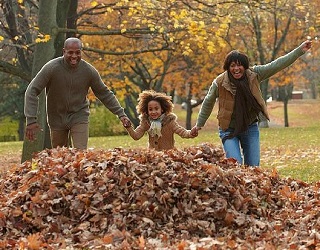From Guest Blogger Diana Smith: How and Why to Recycle Green Waste
There’s a simple way we all function: we use what we need and throw away what we don’t. But how often do we stop to think about what happens to the things we throw away? We might comment on a pile of garbage on the side of the road, or scold kids that throw candy wrappers on the ground, but what happens to the things we throw in the bin? Can we do something more? And where can we do it? The answer is simple – right in your home, every day!
How can green waste be harmful
Green waste makes up a big part of what we throw away, but there is a much better way to take care of it – and it’s probably more important than you think. If we just throw our green waste along with the rest of the trash it ends up in a landfill. That way, not only does it unnecessarily add to the amount of garbage, it also decomposes in a way that pollutes the environment, and it’s one of the big reasons we are fighting global warming. Therefore, it’s very important to reduce the greenhouse gas emission, and reduce the pollution.
What are the alternatives
Now that we know why mixing the trash is bad, let’s figure out how we can not only prevent that from happening, but also reuse our green waste. If we simply separate the trash, we can collect, and later use the green waste in our gardens. For example, cut grass, leaves, or fruit and vegetable scraps can be used to create compost or mulch for your garden. That way you can make sure that you’re using only 100 percent organic materials in your garden.
How can we use green waste
Green waste can be extremely useful, especially for people who are into gardening. There are many ways you can use it to your advantage, and here are just a few fun ideas.
If you mow your lawn regularly, consider leaving the cut grass right there where it falls; it will decompose quickly, and will further feed the soil.
There are other things you can to with scraps, as well! Various vegetables can be regrown from scraps. Many roots, onions, and other vegetable scraps can be planted again after being soaked in water. After they spend some time in water, they will sprout, and grow into a new plant! This is not only an extremely eco-friendly option, but it also saves you money, looks good as kitchen décor, and it’s a fun project.
However, if we’re talking about bigger waste than just fruit or vegetable scraps, it might sometimes be difficult to get rid of it. Branches that fell off during a storm, or the mess created after a yard remodel may be a bit too big to simply stack in a bin. It might seem easy to just drag everything to the nearest dumpster, but the right way to dispose of this kind of trash would be to either call a company such as JNS skip bins that will take care of it for you, or get some willing friends and family to help out.
So, from now on, whenever you do some gardening, or make a pot of soup, make sure that all of your scraps end up in the right place, and not on a landfill. We should all do our best and try to help our planet as much as we can.

